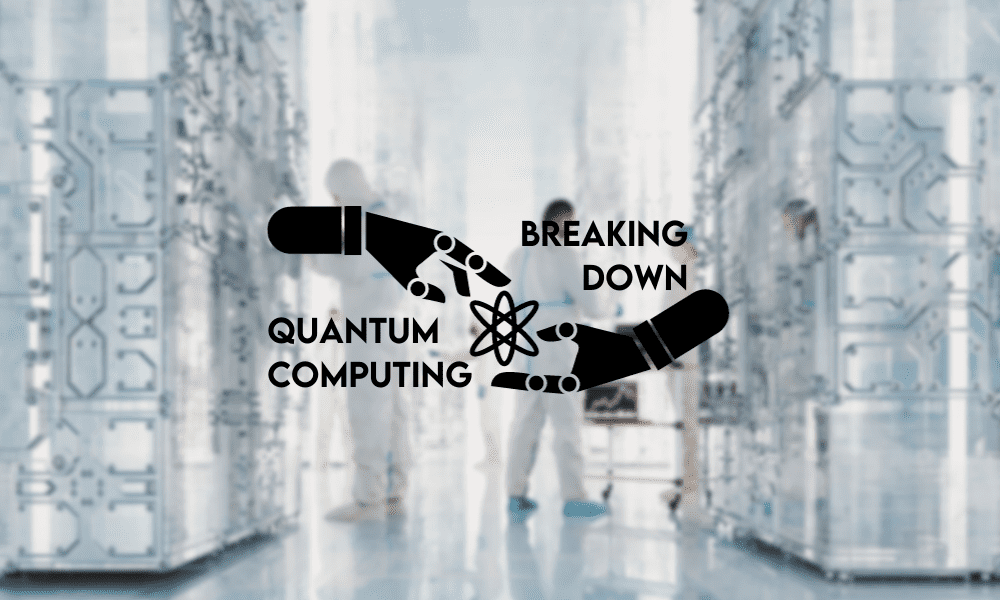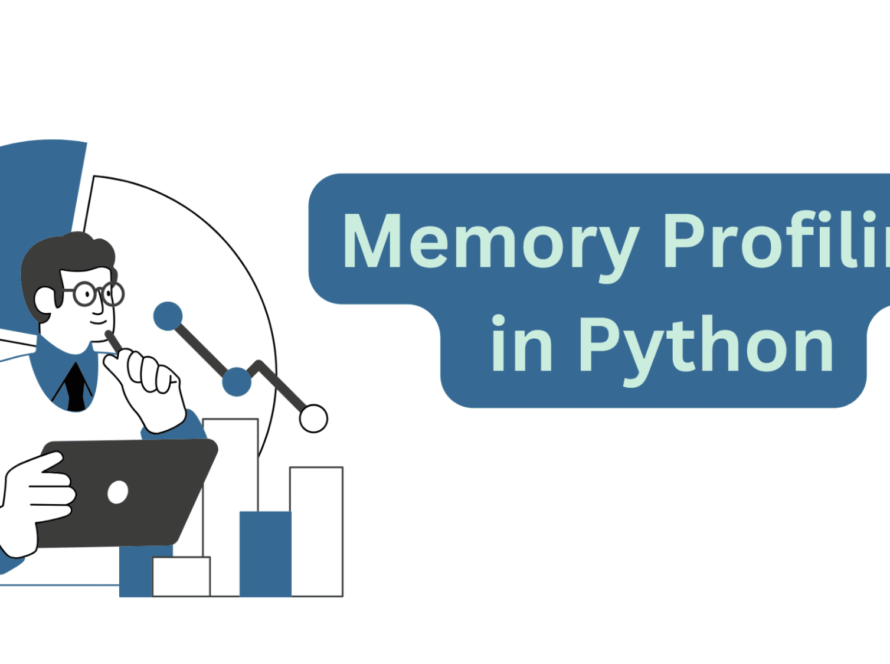
Image by Editor
Quantum computing has had a transformative impact on data science and AI, and in this article, we will go far beyond the basics.
We will explore the cutting-edge advancements in quantum algorithms and their potential to solve complex problems, currently unimaginable with current technologies. In addition, we will also look at the challenges that lie ahead for quantum computing and how they can be overcome.
This is a fascinating glimpse into a future where the boundaries of technology are pushed to new frontiers, greatly accelerating AI and data science capabilities.
Quantum computing involves specialized computers that solve mathematical problems and run quantum models that are quantum theory principles. This powerful technology allows data scientists to build models related to complex processes such as molecular formations, photosynthesis, and superconductivity.
Information is processed differently from regular computers, transferring data using qubits (quantum bits) rather than in binary form. Qubits are vital in terms of delivering exponential computational power in quantum computing as they can remain in superposition – we will explain this more in the next section.
Using a wide range of algorithms, quantum computers can measure and observe vast amounts of data. The necessary algorithms will be input by the user and the quantum computer will then create a multidimensional environment that makes sense of the various data points to discover patterns and connections.
Quantum Computing: Important Terminology
To gain a better comprehension of computing, it is important to gain an understanding of four key terms; qubits, superposition, entanglement, and quantum interference.
Qubits
Qubits, short for quantum bits, are the standard units of information used in quantum computing, similar to how traditional computing uses binary bits. Qubits use a principle known as superposition so that they can be in multiple states at one time. Binary bits can only be 0 or 1, whereas Qubits can be 0 or 1, just a part of 0 or 1, or both 0 and 1.
While binary bits are typically silicon-based microchips, qubits can consist of photons, trapped ions, and atoms or quasiparticles, both real and artificial. Because of this, most quantum computers require extremely sophisticated cooling equipment to work at very cold temperatures.
Superposition
Superposition refers to quantum particles that are a combination of all possible states, and these particles can change and move while the quantum computer observes and measures them individually. A good analogy to explain superposition is the various moments a coin is in the air when it is tossed.
This allows the quantum computer to assess each particle in many ways to find different outcomes. Instead of traditional, sequential processing, quantum computing can run a huge number of parallel computations at once thanks to superposition.
Entanglement
Quantum particles can correlate with each other in terms of their measurements, creating a network known as entanglement. During this engagement, the measurement of one qubit can be used in calculations that are made by other qubits. As a result, quantum computing can solve extremely complex problems and process vast amounts of data.
Quantum Interference
During superposition, qubits can sometimes experience quantum interference, the likelihood of qubits becoming unusable. Quantum computers have measures in place to try to reduce this interference to ensure the results are as accurate as possible. The more quantum interference, the less accurate any outcomes are.
Quantum machine learning (QML) and quantum artificial intelligence (QAI) are two underappreciated, but fast-growing fields within data science. This is because machine learning algorithms are becoming far too complex for traditional computers and require the capabilities of quantum computing to process them effectively. Eventually, this is expected to lead to major advancements in artificial intelligence.
Quantum computers can effectively be trained in the same way as neural networks, adapting physical control parameters to solve problems, such as the strength of an electromagnetic field or the frequency of laser pulses.
An easy-to-understand use case is an ML model that could be trained to classify content within documents, doing so by encoding the document into the physical state of the device so it can be measured. With quantum computing and AI, data science workflows will be measured in milliseconds, as quantum AI models will be able to process petabytes of data and compare documents semantically, providing the user with actionable insights beyond their wildest imagination.
Quantum Machine Learning Research
Major players such as Google, IBM, and Intel have invested heavily in quantum computing but as yet the technology is still not deemed a viable and practical solution at a business level. However, research in the field is accelerating and the technical challenges involved with quantum computing will surely be ironed out with machine learning sooner rather than later.
IBM and The Massachusetts Institute of Technology (MIT) can be credited with unearthing the experimental research that showed it was possible to combine machine learning and quantum computing back in 2019. In a study, a two-qubit quantum computer was used to demonstrate that quantum computing could boost classification supervised learning using a lab-generated dataset. This has paved the way for further research to outline the full potential of this technological partnership.
Quantum Machine Learning In Action
In this section, we will provide details of the quantum computing projects launched by Google and IBM, giving an insight into the enormous potential of the technology.
- Google’s TensorFlow Quantum (TFQ) – In this project, Google is aiming to overcome the challenges of transferring existing machine models to quantum architectures. To accelerate this, TensorFlow Quantum is now open-source, allowing developers to build quantum machine learning models using a combination of Python and Google’s quantum computing frameworks. This means that research of quantum algorithms and machine learning applications has a more active, better-equipped community, enabling further innovations.
- IBM’s Quantum Challenge – Bridging the gap between traditional software development and the development of quantum computing applications, IBM’s Quantum Challenge is an annual multi-day event that focuses on quantum programming. Attended by almost 2000 participants, the event aims to educate developers and researchers to ensure they are ready for the quantum computing revolution.
- Cambridge Quantum Computing (CQC) and IBM – CQC and IBM launched a cloud-based quantum random number generator (QRNG) in September 2021. This groundbreaking application can generate entropy (complete randomness) that can be measured. Not only is this a valuable breakthrough for cybersecurity in terms of data encryption, but it can also play a part in developing advanced AI systems that are capable of the unexpected.
Thanks to this ongoing research and education, quantum computing could power machine learning models that can be applied to various real-world scenarios. For example, in finance, activities such as investing in stocks and using AI signals for options trading will be supercharged by the predictive power of quantum AI. Likewise, the advent of physical quantum computers will spur a revolution in terms of using kernel methods for linear classification of complex data.
There are still significant steps that need to be taken before quantum machine learning can be introduced into the mainstream. Thankfully, tech giants such as Google and IBM are providing open-source software and data science educational resources to allow access to their quantum computing architecture, paving the way for new experts in the field.
By accelerating the adoption of quantum computing, AI and ML are expected to take giant leaps forward, solving problems that traditional computing cannot facilitate. Possibly even global issues such as climate change.
Although this research is still in its very early stages, the potential of the technology is quickly becoming apparent and a new chapter of artificial intelligence is within reach.
Nahla Davies is a software developer and tech writer. Before devoting her work full time to technical writing, she managed—among other intriguing things—to serve as a lead programmer at an Inc. 5,000 experiential branding organization whose clients include Samsung, Time Warner, Netflix, and Sony.



